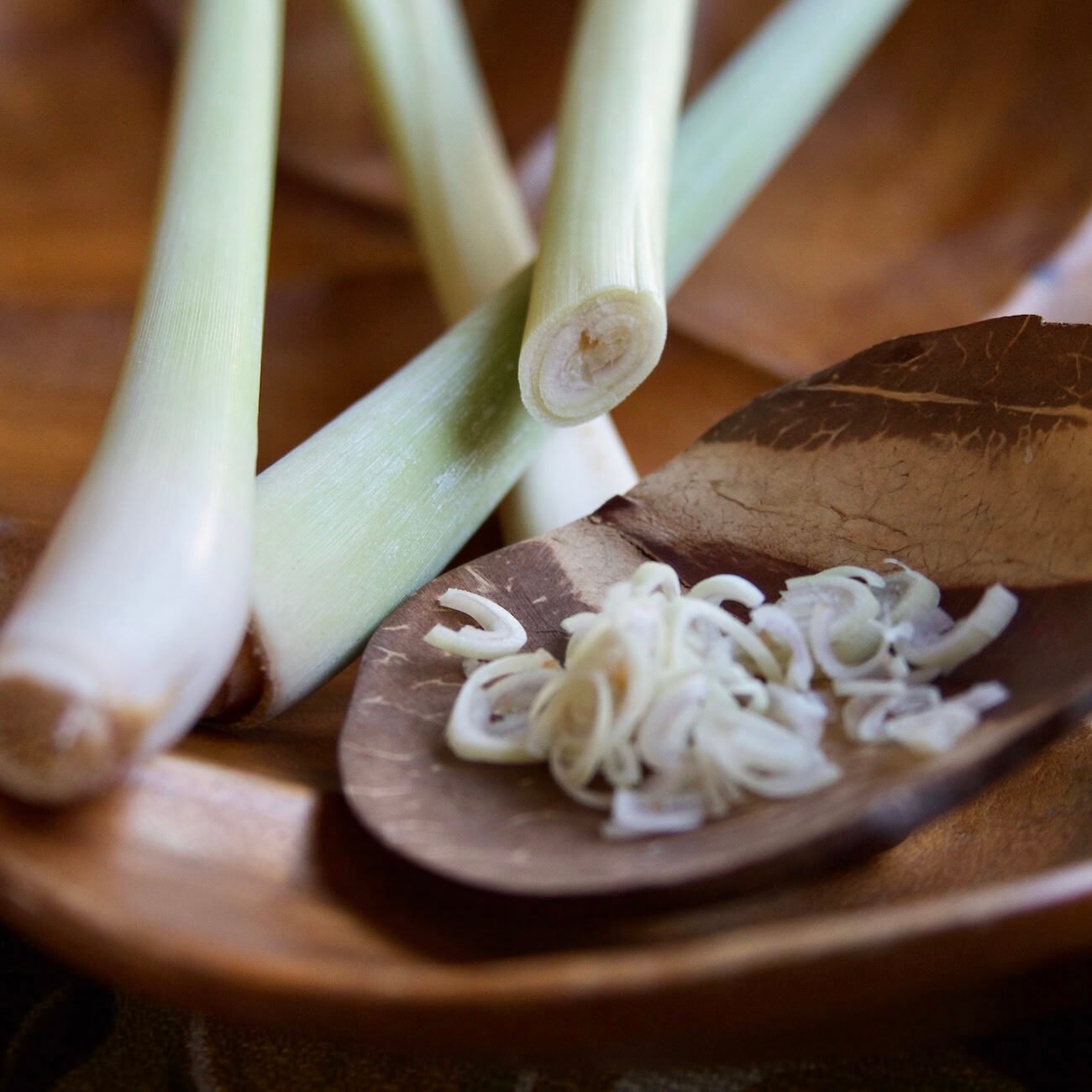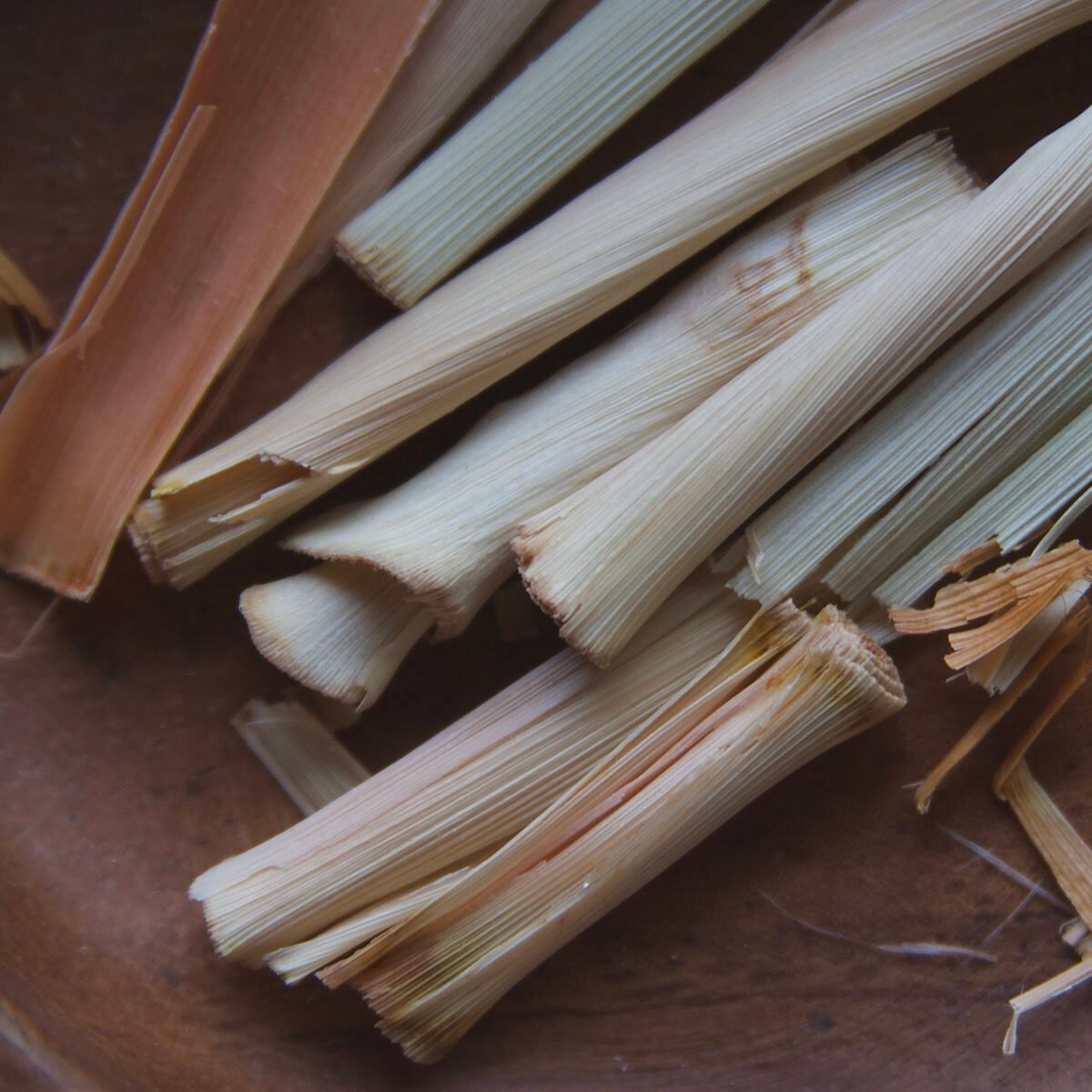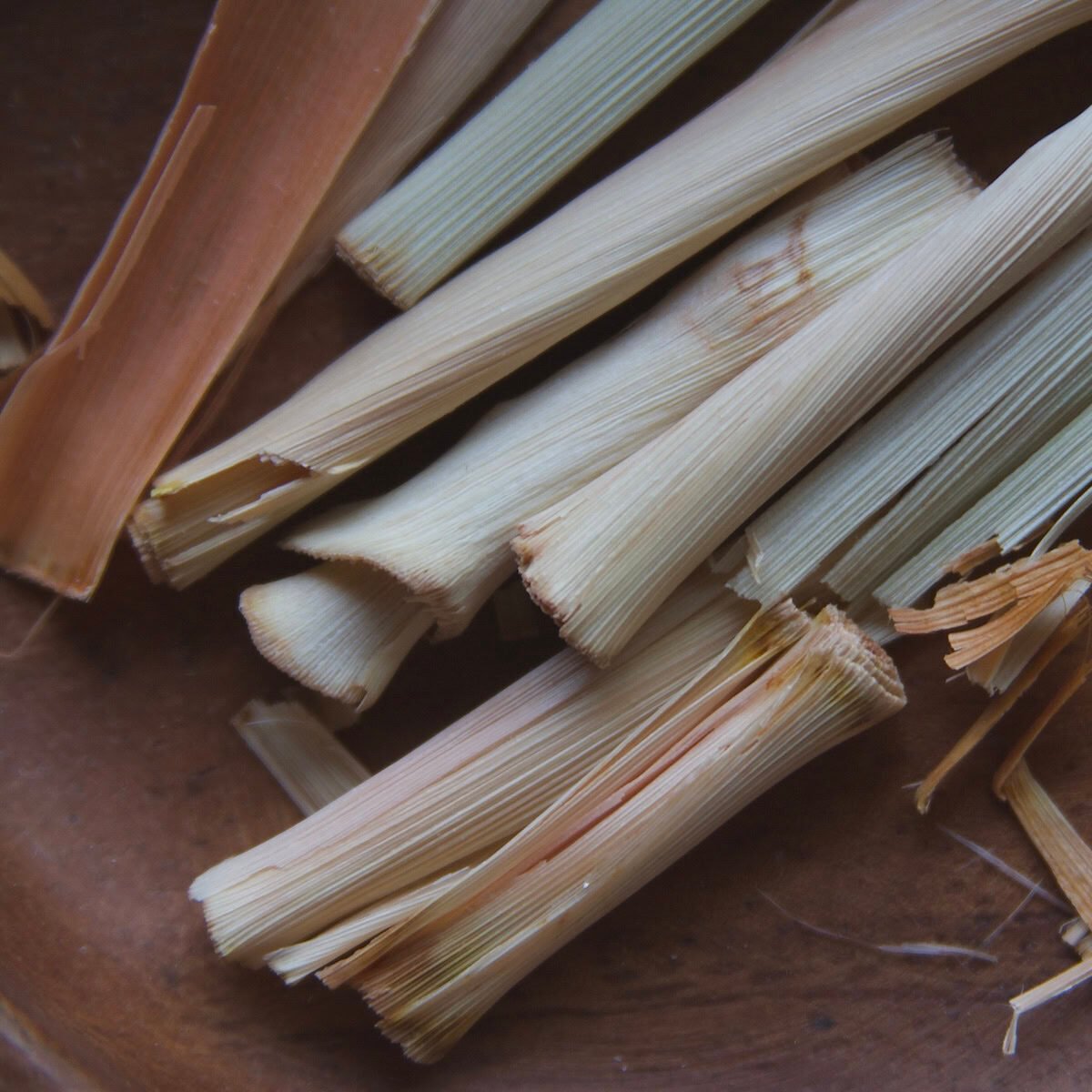Lemongrass
Lemongrass is the spice produced from the stalks of various species in the genus Cymbopogon, part of the grass family. There are approximately 55 species, but the two most widely used in cooking are:
West Indian: Cymbopogon citratus
East Indian: Cymbopogon flexuosus

REGION OF ORIGIN
Lemongrass has been cultivated for millennia in the tropics of Asia, including parts of India, Sri Lanka, and Southeast Asia.
PART & COLOR
Lemongrass stalks are long and slender, and have several layers. The outermost layer is a coarse, deep green sheath that is typically removed prior to cooking. Beneath this is a pale green to light yellow stalk that is firm and fibrous, but more tender. The lower bulbous inner core (the "heart") is the most tender and flavorful part. When you cut lemongrass stocks, you can often see shades of purple in the inner rings. Dried lemongrass comes in smaller, brittle stalk segments. They are much paler, sometimes even off-white (below).
HARVEST
A tropical perennial grass, lemongrass is propagated either through root division or planting stalks. New shoots regenerate quickly and grow rapidly after cutting, so the herb can be harvested continuously year-round as long as there is no frost. The most flavorful and tender stalks are harvested 3-4 months after planting, when they've grown about 2 feet.

FLAVOR & AROMA PROFILE
A symphony of bright citrus notes, the aroma of lemongrass greets the senses with vibrancy and vigor. It’s reminiscent of lemon zest, but its grassy herbaceousness and delicate ginger notes set it apart. When you bruise or cut fresh stalks, refreshing citrus oils burst forth and awaken the room. The flavor of lemongrass mixes a subtle sweetness, a deep earthiness, and a lingering lemony tang. It has the power to ground us and uplift us at the same time.
Dried lemongrass loses its bright top notes but retains its characteristic citrus qualities, albeit in a more subdued and concentrated way. It's a worthwhile way to experience the herb, and you can even grind the dried stalks into a powder to be used as a versatile citrus seasoning.
CULINARY USES
While all parts of fresh lemongrass can be used, the inner stalks are the most desirable. They are finely chopped or crushed to release their potent aromatics into beloved dishes like Thai tom yum soup and green curry as well as Vietnamese phở and Malaysian laksa. In Caribbean cuisine, fresh lemongrass is used to flavor marinades for fish and poultry. It works really well with seafood in general. In South America, it’s paired with other tropical flavors like coconut milk and mango in sauces and stews.
Dried lemongrass, on the other hand, is tougher and more brittle, so it's often first rehydrated. Soaking it in warm water helps release its fragrant oils and loosen the stalk pieces. They can then impart a strong lemony flavor to soups and teas.


